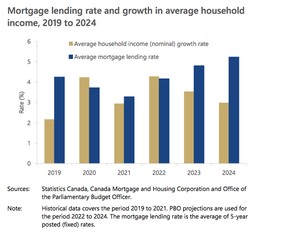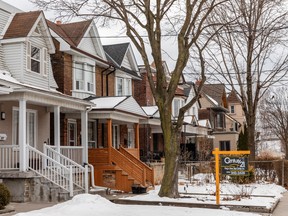The financial vulnerability of new homeowners in the most expensive cities is rising
Article content
The financial vulnerability of Canadians who recently bought a home in some Canadian cities is rising as costs increasingly stretch household budgets, says a new report by the Parliamentary Budget Officer.
Article content
The report looks at average home prices and households’ borrowing capacity in Halifax, Québec, Montréal, Ottawa-Gatineau, Toronto, Hamilton, Winnipeg, Edmonton, Calgary, Vancouver and Victoria.
In 2015, when the national average home price was $413,000, prices in most Canadian cities were close to affordable levels, it said.
But in the years leading up to the pandemic home prices in Hamilton, Toronto, Ottawa, Victoria, Halifax and Vancouver “de-linked” from borrowing capacity, rising to 20 per cent above what the average household could afford.
The PBO said during this time population grew much faster than home construction, “suggesting that supply was not keeping pace with demand, putting upward pressure on house prices.”
Article content
By the end of 2019, the national average home price had risen 37 per cent to $565,800.
-

House prices jump, housing starts slide as affordability takes a blow to start the year
-

Ontario must double housing production to improve affordability, task force says
-

Calgary housing market heats up as homebuyers from Ontario, B.C. pile in
Borrowing capacity expanded during the pandemic, thanks to rock-bottom interest rates and government income support, but in several cities soaring home prices far outpaced these gains.
By the end of 2021 the national average home price ($811,700) had soared 43 per cent above what it was before the pandemic and 97 per cent above January 2015.
The PBO estimates that average home prices in Hamilton, Toronto, Halifax and Ottawa are now 50 per cent above affordable levels.
Article content
Average home prices in Vancouver, Montreal and Victoria are between 30 and 45 per cent higher than affordable.
In Edmonton, Winnipeg and Calgary, home prices are at, or below, affordable levels.

Looking to 2022 and beyond, the study projects that rising mortgage rates will outstrip increases in household incomes, making home prices even more unaffordable.
“While approximate in nature, our results suggest that household financial vulnerability is elevated in several CMAs for households that have recently purchased homes,” it concludes.
• Email: pheaven@postmedia.com | Twitter: pamheaven
Buying a home costs up to 50% more than Canadians can afford in many big cities, says PBO
2022-02-17 18:16:19





